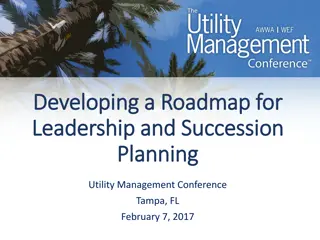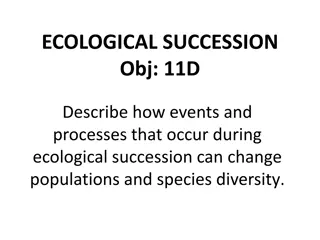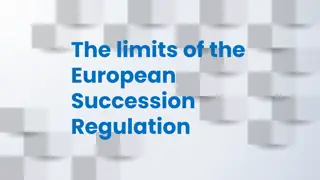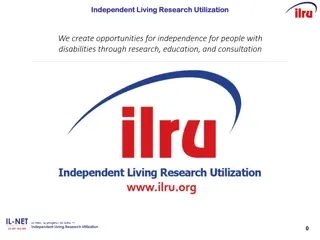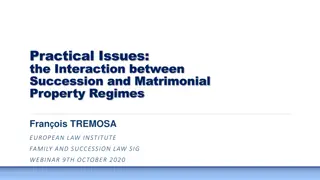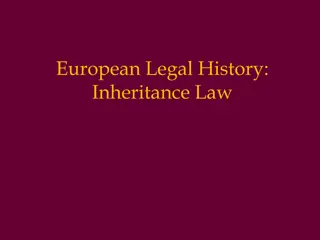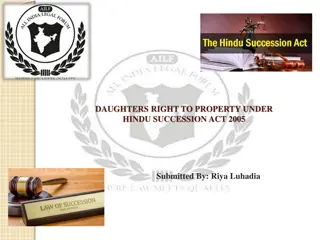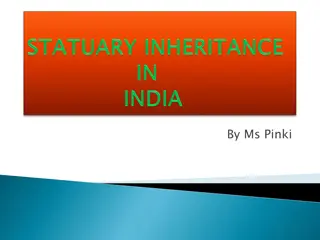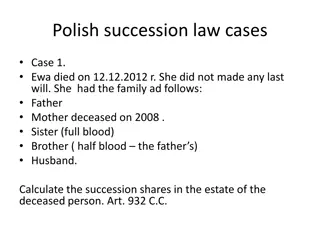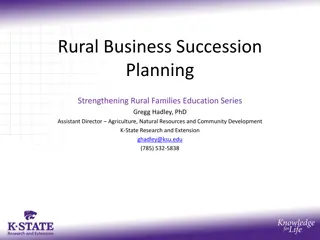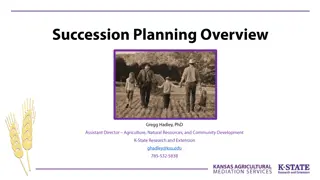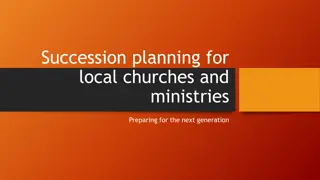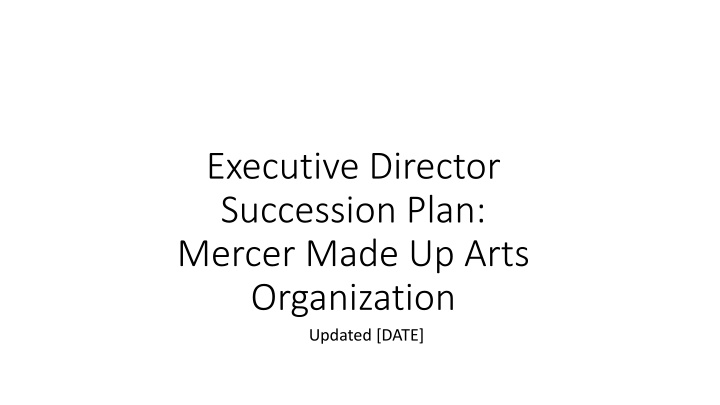
Arts Organization Succession Plan and Leadership Criteria
"Explore the detailed succession plan for an arts organization focusing on leadership attributes, interim and long-term successor candidates, key stakeholder engagement, and transition considerations."
Download Presentation

Please find below an Image/Link to download the presentation.
The content on the website is provided AS IS for your information and personal use only. It may not be sold, licensed, or shared on other websites without obtaining consent from the author. If you encounter any issues during the download, it is possible that the publisher has removed the file from their server.
You are allowed to download the files provided on this website for personal or commercial use, subject to the condition that they are used lawfully. All files are the property of their respective owners.
The content on the website is provided AS IS for your information and personal use only. It may not be sold, licensed, or shared on other websites without obtaining consent from the author.
E N D
Presentation Transcript
Executive Director Succession Plan: Mercer Made Up Arts Organization Updated [DATE]
Succession Plan Summary Relationship and trust builder with key partners and donors. Personable, friendly, listener. DEI understanding and vision Knowledge and vision of the uses of technology in field Background in educational leadership (e.g., former principal, former district-wide leader, etc.) Background in educational sales and marketing, a plus. Person with lived experience as a member of an underrepresented group in education and in arts leadership Geographically located and connected outside of the Princeton area Leadership or management experience, preferably in the non-profit sector. Passion for or experience in the arts and/or educational fields. Experience in leading creative program design and implementation, especially with DEI vision and understanding. Knowledge and/or experience of the New Jersey/Eastern PA philanthropic community and state arts funding organizations. Outstanding verbal and written communication skills for a variety of audiences. Ability to innovate with capacity to create or improve program effectiveness and organizational outcomes. Ability to manage a remote-working team. Experience leading through organizational change. Desired Attributes for Executive Director 2
Succession Plan Summary NAME Interim Successor Candidates Could step in immediately Would create gap in Program space May not be interested in role long term NAME Well connected and respected in the field; Arts education focused, and equity-minded Experience in development and programming Passion for the work is there As a Black woman, is underrepresented in nonprofit leadership Interest in role unknown Long-term Successor Candidates As appropriate, current Trustees of organization may be considered as either interim or long-term successor candidates, given their familiarity with the organization and dedication to its work and mission. Any Trustee under consideration for the role would be excluded from participating in the search committee and required to recuse themselves from a Board vote on the selection. 3
Other Considerations NAME NAME NAME NAME NAME NAME NAME NAME NAME NAME NAME NAME NAME Key Stakeholders to Engage in a Search / Transition (rough priority order) Minimum 2-3 weeks overlap with current ED is ideal Incoming ED accompanies outgoing ED at meetings, including intro with stakeholders Spend time 1:1 getting deeper into detail on budget, staffing, etc. First 6 months is key Identify mentor if new ED is a first time President/CEO Ideally mentor for NJ non-profit sector Focus on HR, people management, financial management Transition Considerations 4



